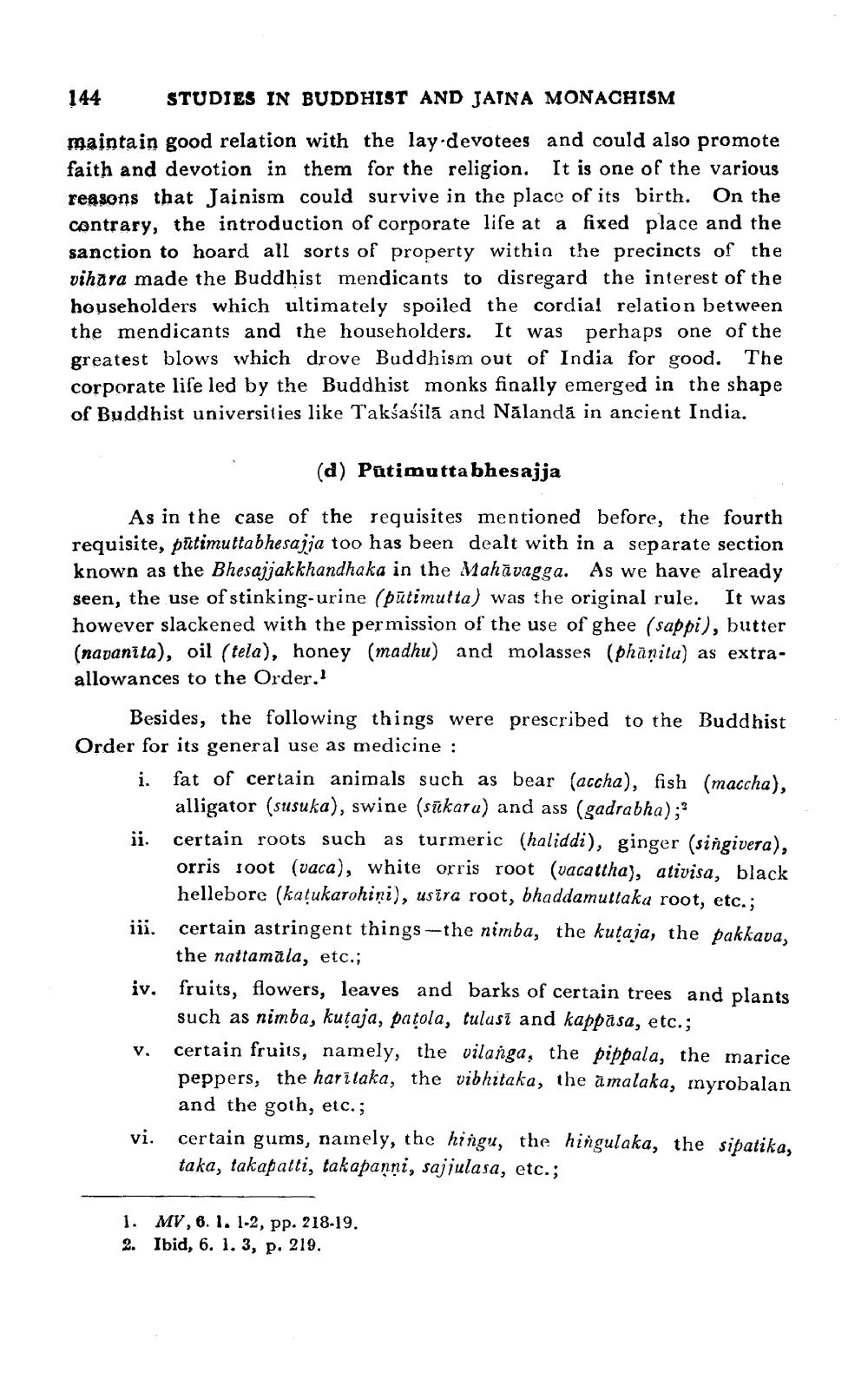________________
144
STUDIES IN BUDDHIST AND JAINA MONACHISM
maintain good relation with the lay devotees and could also promote faith and devotion in them for the religion. It is one of the various reasons that Jainism could survive in the place of its birth. On the contrary, the introduction of corporate life at a fixed place and the sanction to hoard all sorts of property within the precincts of the vihara made the Buddhist mendicants to disregard the interest of the householders which ultimately spoiled the cordial relation between the mendicants and the householders. It was perhaps one of the greatest blows which drove Buddhism out of India for good. The corporate life led by the Buddhist monks finally emerged in the shape of Buddhist universities like Takśaśilā and Nālandā in ancient India.
(d) Putimuttabhesajja
As in the case of the requisites mentioned before, the fourth requisite, putimuttabhesajja too has been dealt with in a separate section known as the Bhesajjakkhandhaka in the Mahavagga. As we have already seen, the use of stinking-urine (pūtimutta) was the original rule. It was however slackened with the permission of the use of ghee (sappi), butter (navanīta), oil (tela), honey (madhu) and molasses (phanita) as extraallowances to the Order.1
Besides, the following things were prescribed to the Buddhist Order for its general use as medicine :
i. fat of certain animals such as bear (accha), fish (maccha), alligator (susuka), swine (sukara) and ass (gadrabha);
ii. certain roots such as turmeric (haliddi), ginger (singivera), orris 100t (vaca), white orris root (vacattha), ativisa, black hellebore (katukarohini), usira root, bhaddamuttaka root, etc.;
certain astringent things-the nimba, the kutaja, the pakkava, the nattamala, etc.;
iii.
iv. fruits, flowers, leaves and barks of certain trees and plants such as nimba, kutaja, patola, tulasi and kappäsa, etc.;
V.
vi.
certain fruits, namely, the vilanga, the pippala, the marice peppers, the haritaka, the vibhitaka, the amalaka, myrobalan and the goth, etc.;
certain gums, namely, the hingu, the hingulaka, the sipatika, taka, takapatti, takapanni, sajjulasa, etc.;
1.
2. Ibid, 6. 1. 3, p. 219.
MV, 6. 1. 1-2, pp. 218-19.




